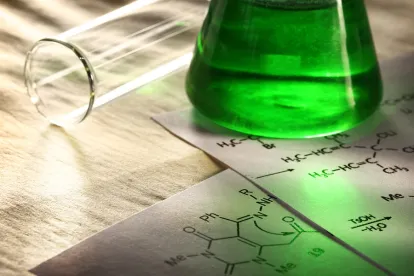The USPTO Patent Trial and Appeals Board (PTAB) declined to institute Inter Partes Review (IPR) proceedings against three Biogen Idec TYSABRI patents. The IPR petitions were filed by Swiss Pharma International, and asserted obviousness based on references that disclosed antibody formulations similar to those claimed in the Biogen patents, but did not teach the high antibody concentration recited in Biogen’s claims. While Swiss argued that the claimed concentration range represented “nothing more than routine optimization of a result effective variable,” the PTAB disagreed. Instead, the PTAB denied institution because Swiss failed to establish a motivation to increase the antibody concentration in prior art formulations and a reasonable expectation of success in doing so.
The Biogen Patents at Issue
The three Biogen Idec patents at issue were U.S. Patent 8,815,236, U.S. Patent 8,349,321, and U.S. Patent 8,900,577, which all have claims related to stable, high-concentration formulations of the anti-α4 integrin antibody natalizumab. For example, claim 1 of the ‘321 patent recites:
-
A stable, aqueous pharmaceutical formulation comprising 20 mg/ml of natalizumab, about 10 mM sodium phosphate buffer, 8.18 mg/ml of sodium chloride, and 0.2 mg/ml of polysorbate 80, and wherein the formulation has a pH of 6.1.
The ‘577 patent claims a similar formulation with a broader range of natalizumab concentration (“about 20 mg/ml to about 150 mg/ml”). The ‘236 patent claims a method of administering such a formulation to a patient with multiple sclerosis (MS).
Biogen markets Tysabri® (natalizumab) to “treat adults with relapsing forms of multiple sclerosis (MS) to slow the worsening of symptoms common in people with MS and to decrease the number of flare-ups (relapses).”
The Obviousness Challenges
The three petitions (filed in IPR2016-00912, -00915, and -00916) relied on the same prior art references to advance two different grounds of obviousness.
The first ground relied on:
-
van Oosten et al, “Increased MRI Activity and Immune Activation in Two Multiple Sclerosis Patients Treated with the Monoclonal Anti-Tumor Necrosis Factor Antibody cA2,” Neurology 47: 1531–34 (1996) (Ex. 1014) (“van Oosten”) or
-
Physicians’ Desk Reference, Product Identification Guide and Product Information for Zenapax, 54th ed., 2696–97 (2000) (Ex. 1024) (“Zenapax”) and
-
Martin & Rabasseda, “Natalizumab,” Drugs of The Future 25: 917–21 (2000) (Ex. 1019) (“Sorbera”).
The second ground relied on:
-
Gordon et al., “A Randomized Placebo-Controlled Trial of a Humanized Monoclonal Antibody to α4 Integrin in Active Crohn’s Disease,” Gastroenterology 121: 268–74 (2001) (Ex. 1017) (“Gordon”) and
-
Physicians’ Desk Reference, Product Identification Guide and Product Information for Zenapax, 50th ed., 1837–41 (1996) (Ex. 1022) (“Orthoclone”) or
-
Aversano et al., “A Chimeric IgG4 Monoclonal Antibody Directed Against CD18 Reduces Infarct Size in a Primate Model of Myocardial Ischemia and Reperfusion,” JACC 25: 781–8 (1995) (Ex. 1023) (“Aversano”).
Collectively, the cited references disclosed similar formulations of other antibodies, but none of the references disclose a formulation of natalizumab at the claimed concentration. The highest antibody concentrations were disclosed in van Oosten (10 mg/ml cA2, an anti-TNF antibody) and Gordon (5 mg/ml natalizumab). Swiss referenced other prior art that taught more concentrated antibody formulations, but none of those references were actually relied upon for grounds of obviousness. Instead, Swiss argued that adjusting the concentration of the formulations to the claimed minimum of 20 mg/ml was “nothing more that routine optimization of a result effective variable.” Swiss also asserted that “[n]o single concentration is critical because a single vial or multiple vials are added to standard intravenous infusion bags” in order to administer the desired dose. (Biogen argued that, if that were the case, then there would be no reason to increase antibody concentration.)
The PTAB Decisions Denying Institution
The PTAB was not persuaded by Swiss’s arguments. The PTAB noted that the highest antibody concentration disclosed in the references relied upon was 10 mg/ml, and the cited references revealed no reason to increase the antibody concentration to at least 20 mg/ml. The PTAB also agreed with Biogen that the prior art indicated that achieving a stable liquid formulation of a monoclonal antibody is both unpredictable and antibody-specific, so that Swiss’s reliance on similar formulations of different antibodies could not provide a reasonable expectation of success.
“Routine Optimization” Arguments at the PTAB
These decisions are similar to other cases (such as the Kyle Bass/Lialda patent decision discussed here) where the PTAB scrutinized the “motivation” facet of obviousness arguments. While examiners may reject claims based on generalized assertions that “routine optimization” would have led to the claimed subject matter, the PTAB is less likely to institute IPR proceedings where the cited references do not teach elements of the challenged claims. Indeed, there are numerous examples of petitions that unsuccessfully relied, at least in part, on “routine optimization” as a proxy for motivation (see, e.g., IPR2016-00085, IPR2016-00397, IPR2016-00678). That said, “routine optimization” can support institution if there is a clear, articulable reason why and how the parameter in question would be optimized (see, e.g., IPR2015-01537).





 />i
/>i

